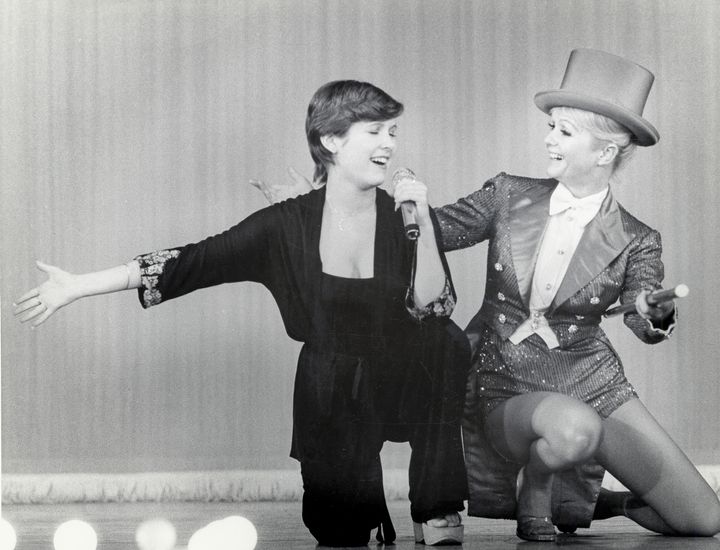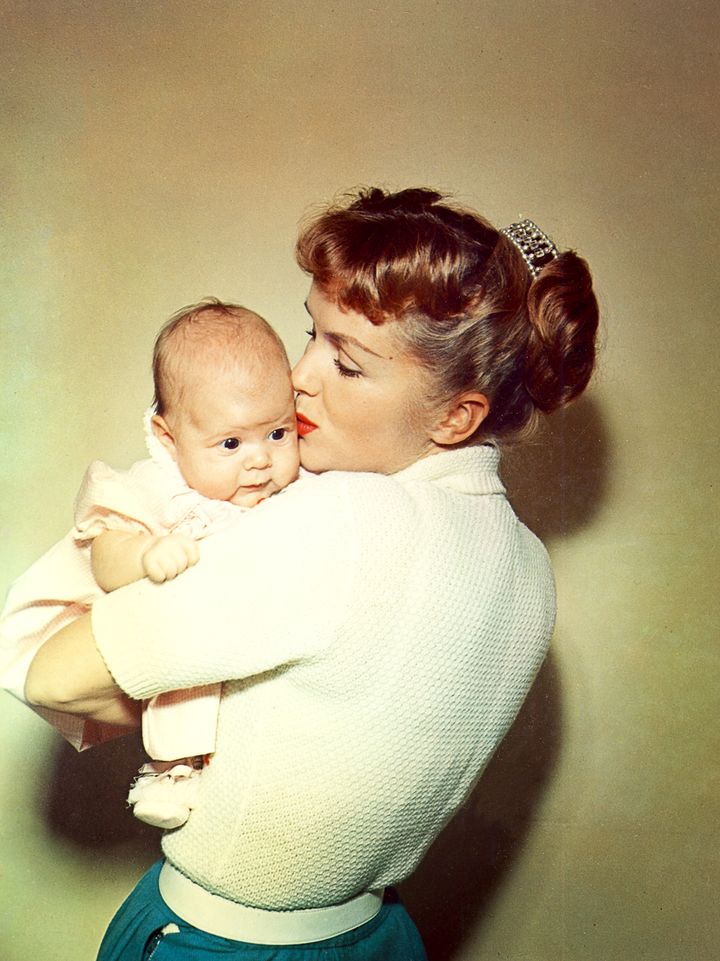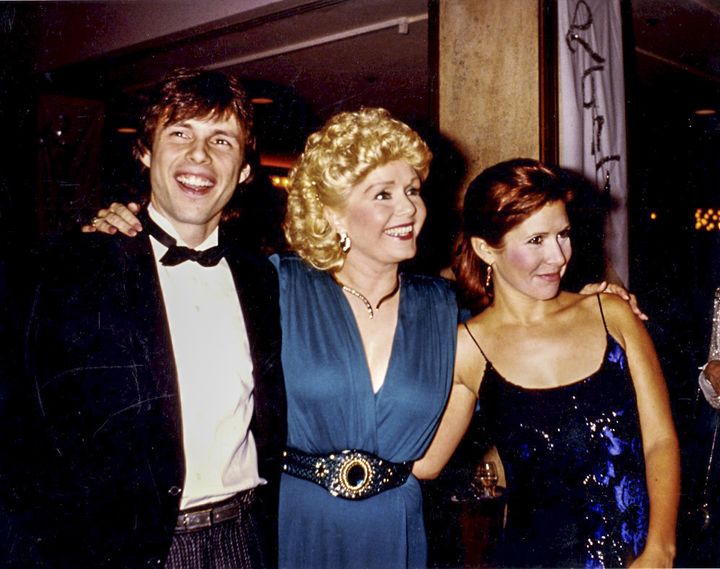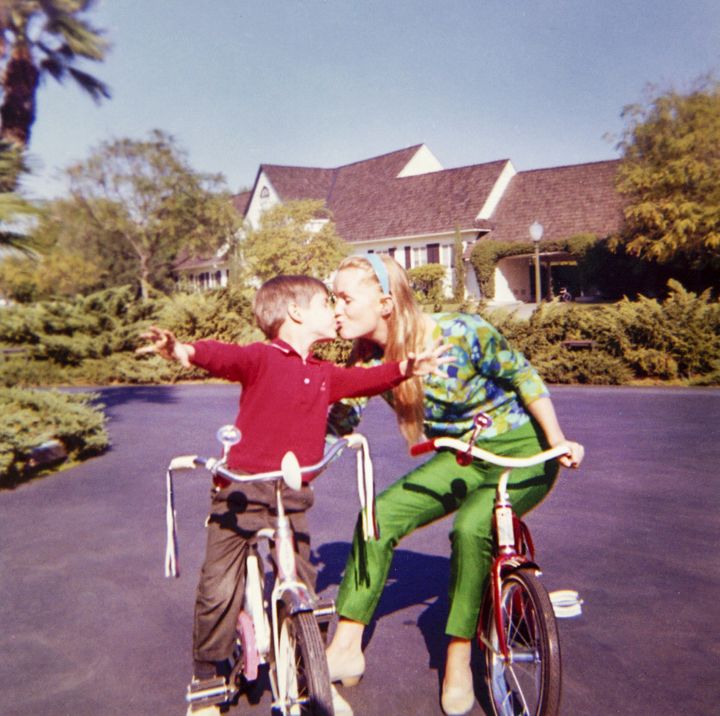It’s hard to imagine a sweeter and more fitting eulogy for Carrie Fisher and Debbie Reynolds than “Bright Lights: Starring Carrie Fisher and Debbie Reynolds.”

Carrie and Debbie on stage a few years back.
The HBO documentary debuts Saturday at 8 p.m. ET, having been pushed forward after the untimely deaths of Fisher and Reynolds a day apart at the end of December.
“Bright Lights” is in many ways a continuation of a story both have been telling for years. They did stage shows together and Fisher seemed to have a bottomless well of bemused observations on what she called a complicated relationship with her famous mother.
What’s most striking about Bright Lights, though, is that on its most important level their relationship doesn’t seem complicated at all.
Almost every frame of the 94-minute production bursts with mutual affection, and while they both happened to be famous, they come across as blood kin to millions of other mothers and daughters whose attachment is simply unlike any other relationship in their lives.
The fact they sometimes drive each other crazy isn’t a wedge as much as a glue. They know each other’s quirks better than they know their own, and that’s one reason they can so effortlessly have each other’s backs.
Fisher, being a professional comedian among her many other accomplishments, delivers an endless string of one-liners about her mother. For some she assumes a tone of exasperation, mostly mock-exasperation, but it’s clear the moments that matter are the ones when she gets serious.

Debbie and Carrie in their younger days.
The nominal opening theme of the documentary is that Reynolds insists on performing a stage show even though she’s so frail she can barely walk. When she’s not standing still in the spotlight, she needs someone to help her walk or she uses a motorized cart.
Fisher worries aloud, repeatedly, that Reynolds will fall or otherwise injure herself, or that at the age of 83 she will simply collapse from exhaustion.
At the same time, Fisher understands exactly why Reynolds is driven to do it – because that’s what she’s done all her life. Performing is why she’s gotten out of bed for the past 60 or 70 years, and Fisher understands that questioning why she continues doing it would be, in the words of Victor Laszlo from Casablanca, asking her why she continues to breathe.
Fisher instead is supportive, joining her mother on-stage for several numbers and otherwise trying to making her life easier. How many famous Hollywood daughters bake a soufflé and walk it over to Mom’s house for dinner?

Todd, Debbie and Carrie Fisher at one of many public events.
The Fisher/Reynolds relationship doesn’t consume the whole documentary. In another subplot, Carrie’s brother Todd talks about how Reynolds spent millions buying up classic Hollywood and show biz memorabilia in hopes of opening a museum.
The collection was impressive, from Judy Garland’s Wizard of Oz shoes to the suits worn by the Rat Pack on stage in Vegas.
For reasons that seem inadequate, Reynolds and Todd could never secure the funding to open a physical museum, and Reynolds ended up selling much of the collection.
Marilyn Monroe’s subway dress, for the record, brought $6.2 million.
Reynolds, while saddened the museum never happened, comes across as resilient. She’s a self-aware and sometimes self-effacing diva, still very concerned that she always look perfect for the camera and her fans.
It’s an image that Bright Lights traces back to her 1950s movies, using delightful clips that conjure the all-American girl from films like Singing in the Rain, Tammy and the Bachelor and The Tender Trap.

Todd and Debbie in paradise.
In those same years she was raising Todd and Carrie, and she comes across as a better-than-average movie star Mom, one who apparently spent actual time with the kids.
She was also a big celebrity, though, which was time-consuming and distracting. Particularly when her husband and the kids’ father Eddie Fisher left her for Elizabeth Taylor. That’ll put a dent in your quiet time.
Reynolds jokes that she didn’t always have the best taste in men, or husbands, and both Carrie and Todd Fisher have remarked on their childhood challenges.
Carrie in particular plunged into drugs, though she notes that was also driven in part by the fact she was manic-depressive, a condition not diagnosed until somewhat later in her life.
One of the most moving moments in Bright Lights has Reynolds recalling how helpless she sometimes felt in dealing with Carrie.
With time, though, they clearly came to care for each other, in multiple senses of the phrase. Sad as the coda to Bright Lights became, it’s a story with a whole lot of heart.
�F} �{8
